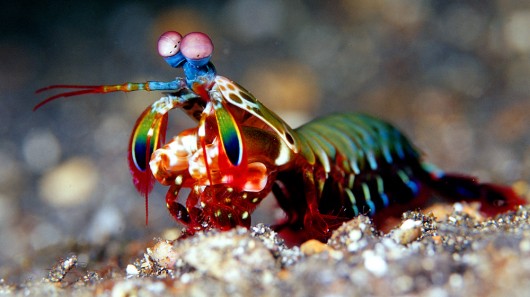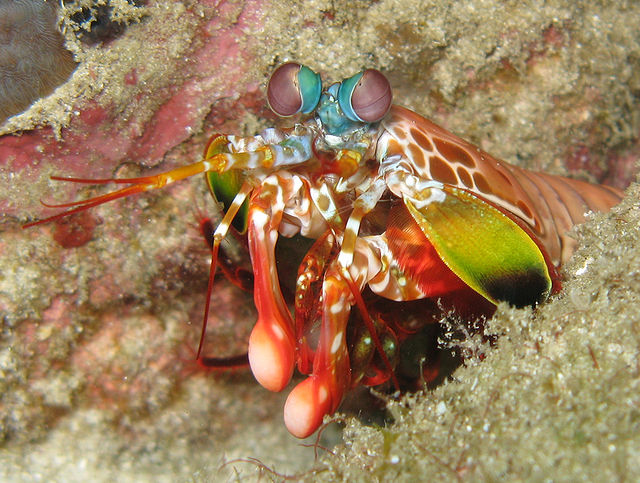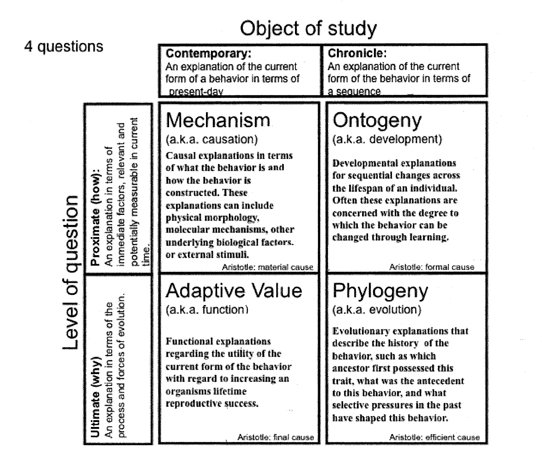Mantis Shrimp
Leah Cepko & Mason Kennon
Reed College: Biology Department (Animal Behavior - Fall 2014)

We introduce you to the organism featuring the FASTEST feeding appendage in the world!
The Mantis Shrimp.
The Peacock mantis shrimp (Odontodacytylus scyllarus)
Image courtesy of Silke Baron
These stomatopod crustaceans comprise the suborder of Unipaltata composed of ~500 species of mantis shrimp! Mantis shrimp typically inhabit tropical and sub-tropical marine ecosystems (mainly in the Indian and Pacific Ocean) where they reign as one of the most dominant predators. Mantis shrimp have several impressive physiological and morphological characters which have made them a fascinating creature of many biological subdisciplines. One of the most interesting phenomenon performed by the mantis shrimp is the manner by which they obtain their prey. Divergence of this specious group has led to the evolution of two distinct species groups referred to as strikers and smashers. Smashers have evolved a club-like appendage which is used to smash hard-shelled prey . Strikers feature an appendage with barbed tips which is used to impale prey from large distances from their body. We will to introduce you to the interesting behavior and anatomy of mantis shrimp species by reference to the four questions for understanding behavior as proposed by Niko Tinbergen (as shown below). While Tinbergen advised analyzing a given behavior with all four lines of inquiry, it is clear that for certain behaviors not all four questions are equally interesting, accessible to measure, and/or have not been the main subject of study in the past literature. Research on the feeding behavior of stomatopods has been primarily focused on the evolution of their power amplification system and thus there exists a great wealth of information pertaining to the mechanism, phylogeny, and adaptive value of these behaviors. Unfortunately, little research has been conducted on the development of stomatopod feeding behavior over the course of an individual's lifetime. We will explore the well established change in conspecific threat displays in stomatopod during molting to draw a potential analogy useful for understanding how feeding behavior is constrained by developmental factors.
Image courtesy of a diagram presented by Dr. Suzy Renn

